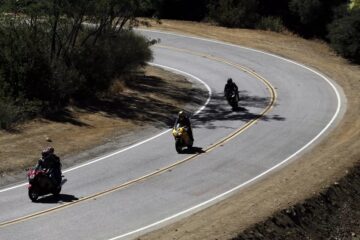Los Encinos State Historic Park faces closure
The Encino park is one of 70 targeted for closure as part of California budget cuts. Fans are dismayed.
Source of this article: The Los Angeles Times, December 26, 2011
Its buildings have survived droughts and earthquakes. But now Los Encinos State Historic Park faces another kind of hardship: state budget cuts.

The 5-acre Los Encinos State Historic Park includes an original nine-room adobe built in 1849, a two-story limestone house and a pond fed by a natural spring. (Ricardo DeAratanha / Los Angeles Times / December 14, 2011)
The San Fernando Valley park is among 70 state parks facing closure because California needs to save money. But local residents won’t give up the cherished refuge without a fight.
“Generations of people have come to this park. It’s such a waste to close it,” said Kathy Moghimi-Patterson, an Encino Neighborhood Council board member who is leading the campaign to save Los Encinos. “This is not just an empty space.”
The 5-acre park at the corner of Balboa and Ventura boulevards in Encino, was an early California rancho and includes an original nine-room adobe, built in 1849, a two-story house made of limestone and a guitar-shaped pond fed by a natural spring. Docents host guided tours, and park staff members stage monthly reenactments of life in the Old West for schoolchildren.
Roy Stearns, a spokesman for the California Department of Parks and Recreation, said Los Encinos landed on the closure list because it is “a public access park that doesn’t generate revenue.” For example, 2009 to 2010 saw profits of only $50, park statistics show.
The park costs about $210,000 to operate annually, according to the state parks department. To keep it open, even temporarily, supporters said they must raise at least $150,000 by July.
State Sen. Fran Pavley(D-Agoura Hills), whose 23rd District includes Encino, is trying to save the park she called “a hidden treasure” and has delegated a task force to help the community brainstorm ways to raise money to keep it open.
Stearns said the decision to close the park could be reversed if a partner or donor could be found to support its maintenance.
Los Angeles Councilman Paul Koretz is also fighting the closure and has introduced a resolution to save the park. He said he feared that the location would become “a target for vandalism and graffiti” if the park closed.
Residents are doing what they can. Alanna Goldman’s sons Ryan, 10, Jake, 8, and 6-year-old Bryce were so concerned about its impending closure that they hosted a bake sale of homemade cookies, brownies and cinnamon rolls and raised about $130, which they donated toward saving the park. “It’s a very special place,” Goldman said.
“I have many fond memories of my kids and I feeding the ducks and wandering among the cacti and citrus trees there,” said Eileen Weiss, mother of four, who lives nearby. Now she worries that her 6-month-old daughter, Yocheved, won’t get to visit the park.
On a recent afternoon, Jennifer Dandurandpark interpreter, explained how the property was used in turn by Native Americans, cattle ranchers and French sheep farmers. Inside the adobe, Dandurand showed off period items, including a 19th century branding iron, rope made from horsehair, and a gunpowder horn.
Outside, cactuses, citrus and Australian silk oaks dotted the manicured grounds, where a glistening natural spring pond hosted squawking geese, mallards and coots.
Fifteen-month-old Caroline Zicari squeaked with delight as she scuttled on still-wobbly legs and threw pellets of duck food — sold by the park for 25 cents — through the chain fence enclosing the pond.
“She gets very excited,” said Sunny Munguia, Caroline’s grandfather, who takes the toddler to the park every Wednesday. “There are so few places you can take children to, where they can see the magic of the Earth — the open skies, the trees, the water,” Munguia said.


